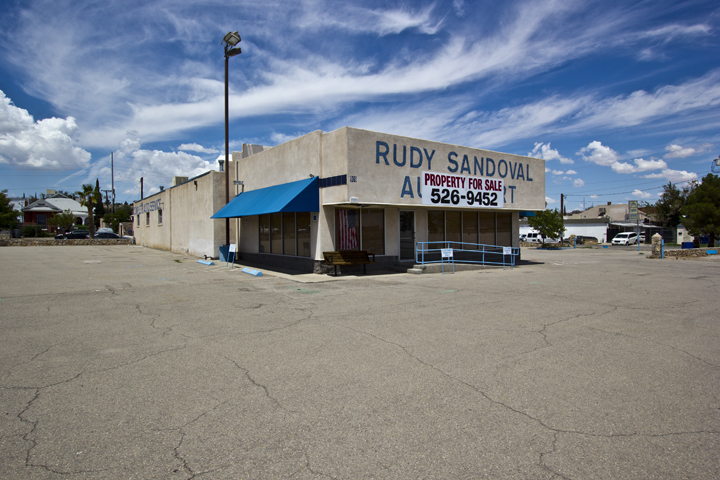I was surprised to see many of El Paso’s first citizens at the recent meeting to discuss the potential move of the Rescue Mission to Barrio Heights. I couldn’t understand what they perceived as their self interest. Then I read this:
“Of course, to many in America, [. . .] being poor is synonymous with being a criminal. Ironically, this misperception is true even among the poor.
And that’s how the status quo wants it.
The U.S. Census Report finds that 50 million Americans are poor. Fifty million voters is a powerful block if they ever organized in an effort to pursue their common economic goals. So, it’s crucial that those in the wealthiest One Percent keep the poor fractured by distracting them with emotional issues like immigration, abortion and gun control so they never stop to wonder how they got so screwed over for so long.”
That’s what Kareem Abdul-Jabar wrote at Time.com. He was talking about Ferguson, but the mindset has permeated all of the United States. It’s what’s driving El Paso’s downtown development agenda, and the recent controversy about moving the Rescue Mission.

The wealthy are afraid of the poor. The logic goes like this: Poor people are desperate, and desperation makes them dangerous. So we shun poor people. Women clutch their handbags to their chests and move to the edge of the sidewalk when a poor person approaches. They avoid eye contact. Politicians make it illegal to sleep in public, or outlaw “aggressive panhandling.” They claim it’s in the interest of public safety, because, you know, poor people are dangerous.
Some people are poor because they have bigger problems. They may have substance abuse problems. They may have mental health issues. Those issues won’t be solved through punitive legislation. They may be incidentally dangerous, but those people need help, not ostracizing.
Some people are poor because life kicked them in the head, and they haven’t got back up yet. Maybe they don’t want to get back up. Maybe homelessness for them is slow-motion suicide. Maybe they need a nudge. Maybe they need to be shown the possibilities.
Let me remind you of a little story attributed to a famous Jewish philosopher. Here’s the punchline:
“For I was hungry, and you didn’t feed me. I was thirsty, and you didn’t give me a drink. I was a stranger, and you didn’t invite me into your home. I was naked, and you didn’t give me clothing. I was sick and in prison, and you didn’t visit me.”
“Then they will reply, ‘Lord, when did we ever see you hungry or thirsty or a stranger or naked or sick or in prison, and not help you?’
“And he will answer, ‘I tell you the truth, when you refused to help the least of these my brothers and sisters, you were refusing to help me.’
“And they will go away into eternal punishment, but the righteous will go into eternal life.”
But maybe you’re not afraid of eternal damnation. Maybe you’re on your second or third wife, and you figure you’ve suffered enough. Maybe you figure that a few colossal philanthropic donations, like to the opera, or the philharmonic, will wipe the slate for a lifetime of self-righteous greed. Then let’s look at it from a more earthly, practical, perspective. Some, like Mr. Abdul-Jabbar, argue that increased disparities in income and wealth have the potential to catastrophically disrupt the social order through violent revolution. If you’re not going to let the poor into the game, they might just upset the board. Witness Ferguson. Witness the Troubles in Mexico.
Others, me included, think that a life with more diversity is a better life. If you want to experience a culture, go hang out with the poor people, because rich people live almost the same all over the world.
If you want to build a vibrant downtown, invite the poor into it. The poor will build an economic ecosystem that even the rich can spend money at. And through a process that looks a lot like natural selection, downtown will grow and prosper. You can’t graft downtown Boulder onto downtown El Paso. The host body will reject it. But if you invite the poor into downtown, you can create an ecosystem that can foster growth. Like the soil microbes that develop first after a natural disaster, that economic growth can foster more advanced ecosystems.
The potential for doom might not be as dire as class warfare. It might be more of what we have now: some people with more money than they can spend, and some people who don’t have enough to eat.
Look at this. It’s from an article called Here’s What Austin’s Newest Housing For the Chronically Homeless Looks Like, on the KUT.org website.

Plans are moving ahead in the Austin area to house about 200 people who are chronically homeless. Community First Village has been about a decade in the making and in just a matter of months, it will break ground.
The property is 27 acres, with little cottages, mobile homes and even some teepees dotting the landscape. A three-acre community garden is also on-site.
Alamo Drafthouse founder and CEO Tim League is one of the project’s staunchest supporters. In a nod to NIMBY politics, He calls it “the very first ‘yes, in my backyard’ project!”
Maybe one of El Paso’s wealthy philanthropists can step up, and develop something like this for El Paso. It might make everyone happy.

Well said!
Brutus
Excellent thoughts and I agree with Brutus, “Well said!”.
Maybe you can help them move to your neighborhood?
I’m on it. I live about five blocks from the proposed new location of the Rescue Mission. About a block closer than you.